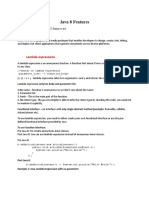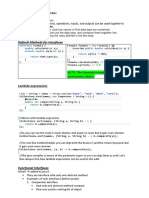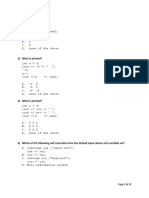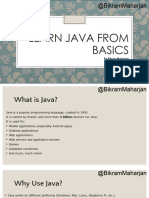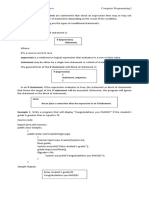0% found this document useful (0 votes)
66 views14 pagesUnit 3 Java
A functional interface in Java contains exactly one abstract method and is the basis for lambda expressions and method references. Java 8 introduced lambda expressions for cleaner code, while the Stream API allows functional-style processing of collections. Additionally, features like default methods, static methods, and new language constructs such as records and sealed classes were introduced in later Java versions to enhance functionality and maintainability.
Uploaded by
ayushchaudhari9450Copyright
© © All Rights Reserved
We take content rights seriously. If you suspect this is your content, claim it here.
Available Formats
Download as PDF, TXT or read online on Scribd
0% found this document useful (0 votes)
66 views14 pagesUnit 3 Java
A functional interface in Java contains exactly one abstract method and is the basis for lambda expressions and method references. Java 8 introduced lambda expressions for cleaner code, while the Stream API allows functional-style processing of collections. Additionally, features like default methods, static methods, and new language constructs such as records and sealed classes were introduced in later Java versions to enhance functionality and maintainability.
Uploaded by
ayushchaudhari9450Copyright
© © All Rights Reserved
We take content rights seriously. If you suspect this is your content, claim it here.
Available Formats
Download as PDF, TXT or read online on Scribd
/ 14

